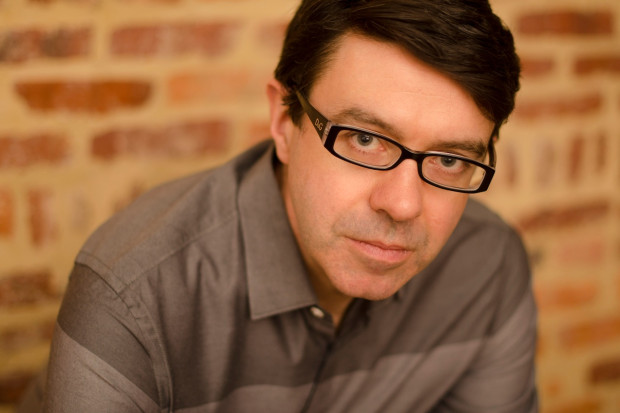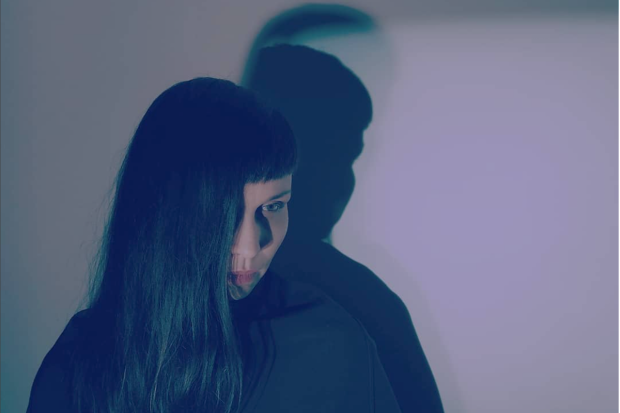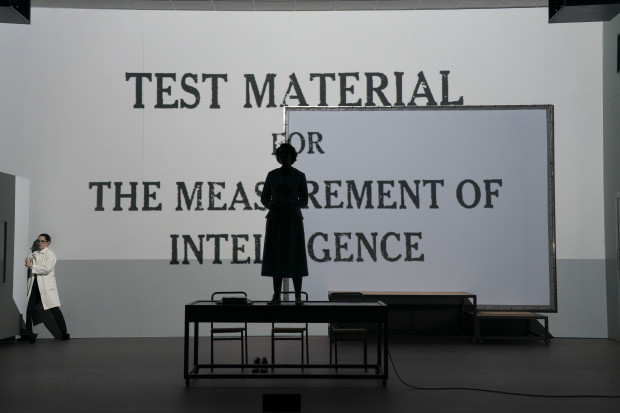
Hilary Woods
Language of Trauma
Hilary Woods notes ‘ideas of inner transmutation in the face of anxiety’ as the primary influence on Birthmarks, her sophomore record, which was written over a two-year span, and recorded in the late stages of pregnancy. Working alongside Norwegian experimental noise producer Lasse Marhaug, Woods fuses field recordings with sinister, occasionally frightening soundscapes to create an immensely challenging, often rewarding meditation on her own disjointed psyche.
Dublin-born Woods initially cut her teeth as a bassist with alt-rock group JJ72, before leaving the band to pursue more experimental routes. Debut solo LP Colts, recorded at home on an eight-track, was acclaimed for its innovative take on trauma and recovery. Two years on, Woods burrows deeper into these recesses on Birthmarks, examining what is found there, refusing to recoil from that which challenges.
It’s a difficult time to release such a doom-laden exploration of inner turmoil, when inner and outer anxieties about the future, and our place within it, grow in obscurity. This is not an album written for distraction, nor will it soothe the disquiet of these times. But it achieves a powerful portrait of that blurred space between the known and the mysterious. Field recordings root these songs in realism, but a kind that is ultimately warped and made strange. Dreamlike, heavy tones flood the atmosphere to create a woozy, benumbed space between reality and inner worlds.
The tramping, apocalyptic opening beat of ‘Tongues of Wild Boar’ opens proceedings with a sense of foreboding and dread. Woods’ voice is centred within the murky tones, sweet and ghostly, while a malevolent drone circles. The visual influences of the record, among them post-war Japanese and wet-plate photography, the drawings of Francis Bacon, the images of Francesca Woodman, and the films of Chris Marker, are impossible to ignore. ‘I am afraid it’s growing inside of me’, she sings on ‘Orange Tree’, ‘my body knows I can’t make it out’. The body and the mind linked in ceaseless trauma, evoking perhaps the screaming mouth motif of Francis Bacon.
While the journey inward is authentic, and frightening in its starkness, these eight tracks seem to call for something beyond what they offer. Perhaps not lightness – an album exploring the anxieties of the self does not need to offer a solution – but more variation on technique. The middle section of the record is gruelling in its intensity – no doubt it’s purpose – but it begs for the delicate touches that bookend the work. The moments where we glimpse Woods through the fog – the conviction of her voice alongside the rich cello on ‘Orange Tree’, the ghostly resonance of ‘There Is No Moon’, her layered vocal cry that closes ‘Through The Dark Love’ – show Woods at her most compelling.
Birthmarks is not an easy record. Its eye is cast inward, sometimes uninvitingly, to an artist who is learning her own language of trauma. With Birthmarks, Woods is turned inward, reaching for something unknown to us. Sometimes the effect is alienating, but there is a buoyancy to the more musically driven aspects of the record that often make the journey worthwhile.
To purchase Birthmarks, visit https://hilarywoodsmusic.bandcamp.com/
Published on 29 April 2020
Andrea Cleary is a freelance music and culture writer based in Dublin.















